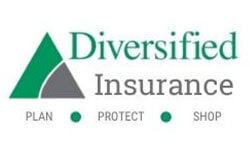What is Adjustable Life Insurance
What is Adjustable Life Insurance
Adjustable life insurance, also known as universal life insurance, is a type of permanent life insurance that offers policyholders more control and flexibility over their coverage. In this extensive guide, we will explore the key features, pros and cons, and considerations of adjustable life insurance. Whether you’re new to life insurance or looking for a policy that suits your changing needs, this guide has got you covered.
Understanding Adjustable Life Insurance
Adjustable life insurance, or universal life insurance, is a type of permanent life insurance that provides coverage for your entire lifetime. Unlike term life insurance, which offers coverage for a specific period, adjustable life insurance offers the flexibility to adjust various aspects of your policy as your needs change.
Key Features of Adjustable Life Insurance
Adjustable life insurance policies allow policyholders to make adjustments to their coverage, premium payments, and cash value. Here are the key features of adjustable life insurance:
Coverage Amount: With adjustable life insurance, you have the flexibility to increase or decrease your coverage amount based on your changing needs. For example, if you have a child, you may want to increase your coverage to ensure their financial security.
Premium Payments: Adjustable life insurance policies allow you to modify the amount and frequency of your premium payments, within certain limits set by your insurer. This flexibility is especially beneficial if your financial circumstances change, such as during a period of unemployment.
Cash Value: One of the unique features of adjustable life insurance is the cash value component. As you make premium payments, a portion of the money goes into a cash value account, which accumulates over time. This cash value can be used for various purposes, such as supplementing retirement income or paying premiums.
How Does Adjustable Life Insurance Work?
Adjustable life insurance policies consist of two main components: the death benefit and the cash value. The death benefit is the amount of money that will be paid to your beneficiaries upon your death. The cash value, on the other hand, is the savings component of the policy that grows over time.
The cash value in an adjustable life insurance policy is invested by the insurance company, and its growth is determined by various factors, including market conditions and the insurer’s portfolio performance. Policyholders can choose from different investment options offered by the insurer, such as stocks and mutual funds.
Policyholders can access the cash value through withdrawals or loans. However, it’s important to note that any outstanding loans will be deducted from the death benefit if not repaid. Additionally, the cash value can be used to pay premiums or increase the policy’s death benefit, depending on the policy terms.
The Benefits of Adjustable Life Insurance
Adjustable life insurance offers several benefits that make it an attractive option for individuals and families looking for flexible coverage. Here are some of the key benefits:
Flexibility in Premium Payments
One of the main advantages of adjustable life insurance is the flexibility it offers in premium payments. Policyholders can adjust the amount and frequency of their premium payments to align with their financial situation. This can be particularly beneficial during times of financial hardship or when income fluctuates.
Adaptable Coverage Amount
With adjustable life insurance, you have the ability to increase or decrease your coverage amount as your needs change. This flexibility allows you to tailor your policy to meet your specific financial goals and obligations. For example, if you have dependents, you may want to increase your coverage to ensure their financial security.
Cash Value Accumulation
The cash value component of adjustable life insurance provides an added financial benefit. As you make premium payments, a portion of the money goes into the cash value account, which grows over time. This cash value can be used for various purposes, such as supplementing retirement income or funding future expenses.
Potential Tax Advantages
Another benefit of adjustable life insurance is the potential for tax advantages. The cash value in the policy can grow on a tax-deferred basis, meaning you won’t owe taxes on the growth until you withdraw the funds. Additionally, policyholders may be able to take tax-free loans against the cash value.
Factors to Consider
While adjustable life insurance offers flexibility and benefits, there are several factors to consider before purchasing a policy. Here are some important factors to keep in mind:
Cost
Adjustable life insurance generally comes with higher premiums compared to term life insurance. The increased cost is due to the added flexibility and cash value component of the policy. It’s important to evaluate your budget and ensure that you can comfortably afford the premiums over the long term.
Investment Returns
The cash value in adjustable life insurance policies is invested by the insurance company. The returns on these investments can vary based on market conditions and the insurer’s performance. It’s essential to understand the potential returns and risks associated with the investment component of the policy.
Policy Adjustments
While adjustable life insurance offers flexibility, there are limitations to how and when you can adjust your policy. Some insurers may have restrictions on the frequency and timing of adjustments. It’s important to review the policy terms and understand the conditions for making changes to your coverage.
Comparing Adjustable Life Insurance to Other Types
Adjustable life insurance is just one option among several types of life insurance. It’s important to understand how adjustable life insurance compares to other types to make an informed decision. Here’s a comparison of adjustable life insurance with other common types of life insurance:
Term Life Insurance
Term life insurance provides coverage for a specific period, typically 10-30 years. Unlike adjustable life insurance, term life insurance does not have a cash value component. Term life insurance is generally more affordable but does not offer lifelong coverage or the flexibility to adjust coverage or premiums.
Whole Life Insurance
Whole life insurance also offers permanent coverage but does not provide the same degree of flexibility as adjustable life insurance. With whole life insurance, the premium payments and coverage amount are fixed for the life of the policy. However, whole life insurance does offer a guaranteed cash value component.
Variable Life Insurance
Variable life insurance is another type of permanent life insurance that allows policyholders to invest the cash value component in various investment options. Unlike adjustable life insurance, variable life insurance does not offer the same degree of flexibility in adjusting coverage or premiums.
How Does Cash Value Work?
One of the key features of adjustable life insurance is the cash value component. The cash value is a savings account within the policy that grows over time. Here’s how the cash value works:
Allocation of Premium Payments
When you make premium payments for an adjustable life insurance policy, a portion of the money goes towards the cost of insurance coverage, while the remainder is allocated to the cash value. The cash value grows over time as you continue to make premium payments.
Investment Component
The cash value in an adjustable life insurance policy is invested by the insurance company. The returns on these investments can vary based on market conditions and the insurer’s performance. The growth of the cash value is tax-deferred, meaning you won’t owe taxes on the growth until you withdraw the funds.
Accessing the Cash Value
Policyholders can access the cash value in their adjustable life insurance policy through withdrawals or loans. Withdrawals allow you to take out a portion of the cash value, while loans allow you to borrow against the cash value while keeping the policy in force. It’s important to note that any outstanding loans will be deducted from the death benefit if not repaid.
Surrendering the Policy
Another option for accessing the cash value is surrendering the policy. When you surrender the policy, you effectively terminate the coverage and receive the accumulated cash value. However, surrendering the policy means forfeiting the death benefit, and you may also be subject to taxes on the cash value amount.
Determining the Cost of Adjustable Life Insurance
The cost of adjustable life insurance can vary depending on various factors, including your age, health, coverage amount, and policy terms. Here are some key considerations for determining the cost of adjustable life insurance:
Underwriting Process
When applying for adjustable life insurance, you will undergo an underwriting process. During this process, the insurance company assesses your risk profile, including your health history, lifestyle habits, and medical exams. The underwriting process helps determine the cost of your policy.
Coverage Amount
The coverage amount you choose for your adjustable life insurance policy will impact the cost of your premiums. Higher coverage amounts generally result in higher premium payments, while lower coverage amounts may be more affordable.
Premium Payment Frequency
The frequency of your premium payments can also affect the cost of adjustable life insurance. Some insurers offer discounts for annual or semi-annual premium payments, while monthly payments may result in slightly higher premiums.
Age and Health
Your age and health play a significant role in determining the cost of adjustable life insurance. Younger, healthier individuals generally pay lower premiums, while older individuals or those with pre-existing health conditions may face higher premiums.
Is Adjustable Life Insurance Worth It?
The decision to purchase adjustable life insurance depends on your individual needs and financial goals. While adjustable life insurance offers flexibility and benefits, it may not be the best option for everyone. Here are some scenarios where adjustable life insurance might be worth considering:
Financial Flexibility
If you value the flexibility to adjust your coverage and premium payments based on your changing financial situation, adjustable life insurance can be a good choice. This flexibility can be particularly beneficial during periods of financial hardship or when income fluctuates.
Supplementing Retirement Savings
The cash value component of adjustable life insurance can serve as an additional source of retirement savings. If you have already maxed out other tax-advantaged retirement accounts, such as 401(k) plans or IRAs, adjustable life insurance can provide another avenue for building tax-deferred savings.
Planning for Special Needs
Adjustable life insurance can be beneficial for parents of children with special needs. By adjusting the coverage and cash value, parents can ensure that their child’s financial needs are met even after they are gone. It provides peace of mind and financial security for the child’s ongoing care.
Conclusion
Adjustable life insurance offers policyholders the flexibility and control to adjust various aspects of their coverage, premium payments, and cash value. It provides lifelong coverage and the potential for cash value accumulation. However, the cost and complexity of adjustable life insurance may not be suitable for everyone. Careful consideration of your financial goals and needs is essential when deciding whether adjustable life insurance is the right choice for you. Consulting with a licensed insurance professional can provide valuable insights and guidance in making this important decision.
Remember, adjustable life insurance is just one option among several types of life insurance. Take the time to understand the features, benefits, and limitations of each type before making your decision. By doing so, you can ensure that you choose the life insurance policy that best fits your unique needs and provides the financial protection and peace of mind you and your loved ones deserve.




